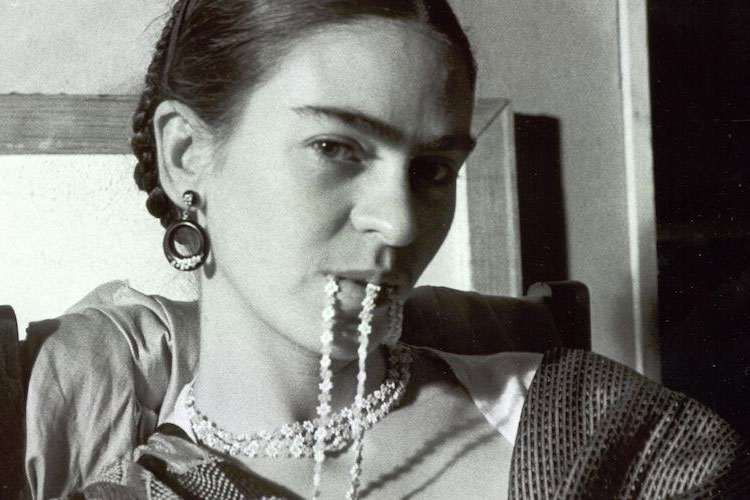The following questions and answers are excerpted from a conversation that followed the NBR screening of Frida.
You’ve worked on Biopics before: for example, you edited RBG. How was making Frida different from those other experiences, apart from the fact that you directed?
Carla Gutierrez: I came to it with a personal connection. I mean, I think a lot of people have a personal connection to Frida’s art. But we also felt the responsibility of finding a way for her voice to really carry the story. So, yes, it is all archival… but we really wanted to make it feel as present as possible. And that was both a kind of exercise, and a challenge, and a beautiful process of digging into Frida’s own words and learning that she could actually tell her own story. That was really special.
And, you know, sometimes it was difficult, and a lot of times it was really beautiful and exciting when we discovered things. So I think that was a little bit different from RBG. In this case, it was Frida herself that really, you know, came alive.
your personal connection or attraction to a story is just the beginning
Let’s talk about the challenges of that approach, of letting Frida tell her own story. Because it’s one thing to have that idea, but I’m sure there must have been some points in the filmmaking process where you kind of felt that you were in a corner, creatively. How did you solve those problems while still keeping true to your original vision?
CG: Yes, there were challenges, but also, I think it was a gift. We didn’t have an opportunity to sit in front of her and ask her to tell us about her life! And so we relied on her writings. And they came from letters that she sent to loved ones and her diary. Her writings and her words lived very much in this world of emotions. So she wasn’t describing exactly what was happening in her life— and it was sometimes a bit of a challenge to make those connections, but at the same time, what a gift, right? And we kind of learned to be guided by that. To lean into just her emotions, and that was the exciting part of it. You actually get to hear the texture of her personality, the texture of her life, the feelings of those moments in her life… and I think that is what is unique that our film offers, to present that side of her to viewers, to let the audience really hear her heart and not necessarily hear people talking about her from the distance of history and the academic distance of understanding art.
One of the things that I noticed is how vocal she is about pushing against the patriarchy, pushing against the idea of a “man’s world.” Did this aspect of her story resonate with you in particular, or was it just one aspect of many that you found compelling?
CG: Besides a film that was done, I believe, in 1968 by a Mexican woman, I’m the first Latina to make a film about Frida. And I think that gave me a particular closeness to the subject matter. I think the understanding of growing up as a woman in this culture gave me a unique window into really capturing that experience in this film.
I always say that your personal connection or attraction to a story is just the beginning. Then you really have to do the homework and do the research, right? Because there’s still a distance that you have to go. You know, I did not grow up in Mexico. I grew up in Peru. I also have this sense of history, right?
We did a lot of research to be able to find every writing that there is on Frida that has been published or made public out there. And her writings are all over the place: you cannot find all her writings in one publication. So we had to follow tracks and different collections to be able to like get close to her real voice. And of course there was the cultural knowledge that I brought in from the very beginning. And I think my experience of the gender dynamics in Latin America — that I brought in from the beginning — was valuable. But there was a lot of work that we also needed to do to understand the context and understand the woman.

